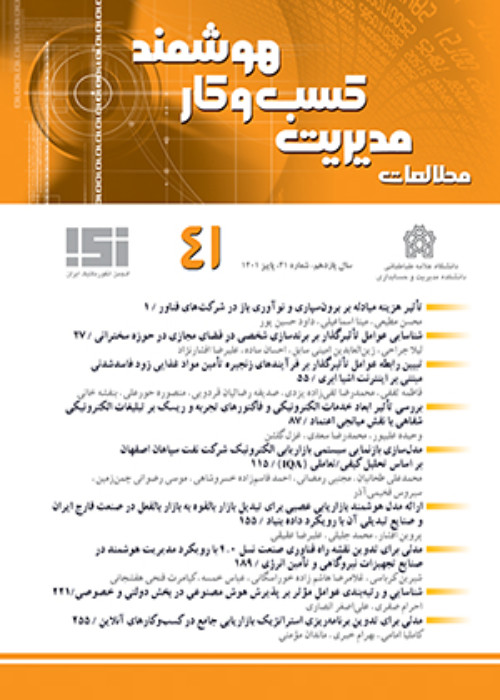Investigating Factors Affecting the Development of Knowledge Base Businesses Based on IT
In recent decades, a large number of information technology-based businesses have risen to the top of the world's top companies list. Until the early years of the third millennium AD, large companies and owners of oil wells and mineral resources, along with industrial production complexes that are several decades and several hundred years old, have been the flagships of the list of the largest and most successful companies in the world, but this dominance has been challenged by IT-based start-ups during the last two decades. According to the report of the Economist magazine, between the years 2006 and 2016, the top of the list of the world's top companies was suddenly empty of companies active in the fields of energy and production, and their places were filled by information technology young companies. These changes are clear examples of the transition of the world economy from resource-oriented to data-oriented.
According to international reports, the value of the production of information technology businesses from the total production of the world’s economy has increased by 29% in the period of 5 years, between 2015 and 2020, reaching 24 trillion and 615 billion dollars, and the share of the digital economy has reached 25% of the total world economy. In other words, the digital economy has swallowed two and a half percent of the share of the traditional economy in 5 years. (UNCTAD, 2019)
These facts show the need to pay attention to the position of businesses based on information technology.
Theoretical Literature
IT-based businesses
Businesses that convey their value proposition to customers through various information technology tools, and the main components of their business model are based on information technology, are called information technology-based businesses.
There are three defined levels in the definition of digital economy. Its limited definition as the main core of the digital economy includes specialized products in the field of information and communication technology, including hardware production, software development, and the provision of Internet and telecommunication services. In the second level, in addition to the central core, it also includes the added value resulting from digital platforms and services. The third level of definition, referred to in the literature as the digitized economy, includes the added value resulting from the use of information technology in all industries.
The present research is based on a model that is the product of a qualitative study. The mentioned model became the basis for designing the research questionnaire. After evaluating the validity of the content, the designed questionnaire was sent to a community consisting of three different groups of industry activists, and the received data was analyzed using the Structural Equations Method.
After conducting the tests and making the corrections, the final research model was confirmed, consisting of 5 main categories and 22 subcategories or indicators. The main categories counted include 1) organizational factors, 2) environmental factors, 3) policy factors, 4) economic results, and 5) non-economic results.
Internal characteristics refer to the factors that a business must focus on for success. In other words, if the following factors are present in a business, the chance of being successful in the market are much higher than that in businesses that did not pay attention to these factors. In other words, this group of factors refers to the internal coordinates of businesses prone to growth and development. These factors include the right project team, business model, specialized human resources, access to financial resources, innovation, and effective marketing.
The second group of factors affecting the development of businesses under research are environmental factors. These factors include five categories of sanctions, inappropriate laws, weak information technology infrastructure, economic stagnation of the country, and problems of the information technology innovation system.
The third category of factors explained in this research is the role of the government in the development of such businesses in the country. These factors have focused on how the government intervenes in this matter in such a way as to facilitate and accelerate the growth of these businesses. Although these factors are also relevant for businesses in different sectors, the examples of these policies in IT businesses and how the government supports them are different.
Based on the results of this research, policy factors in this model are an exogenous and independent variable that plays a key role in the development of this category of businesses. This issue confirms the necessity of the government's presence and adoption of policies to support the development of these businesses.
- حق عضویت دریافتی صرف حمایت از نشریات عضو و نگهداری، تکمیل و توسعه مگیران میشود.
- پرداخت حق اشتراک و دانلود مقالات اجازه بازنشر آن در سایر رسانههای چاپی و دیجیتال را به کاربر نمیدهد.


